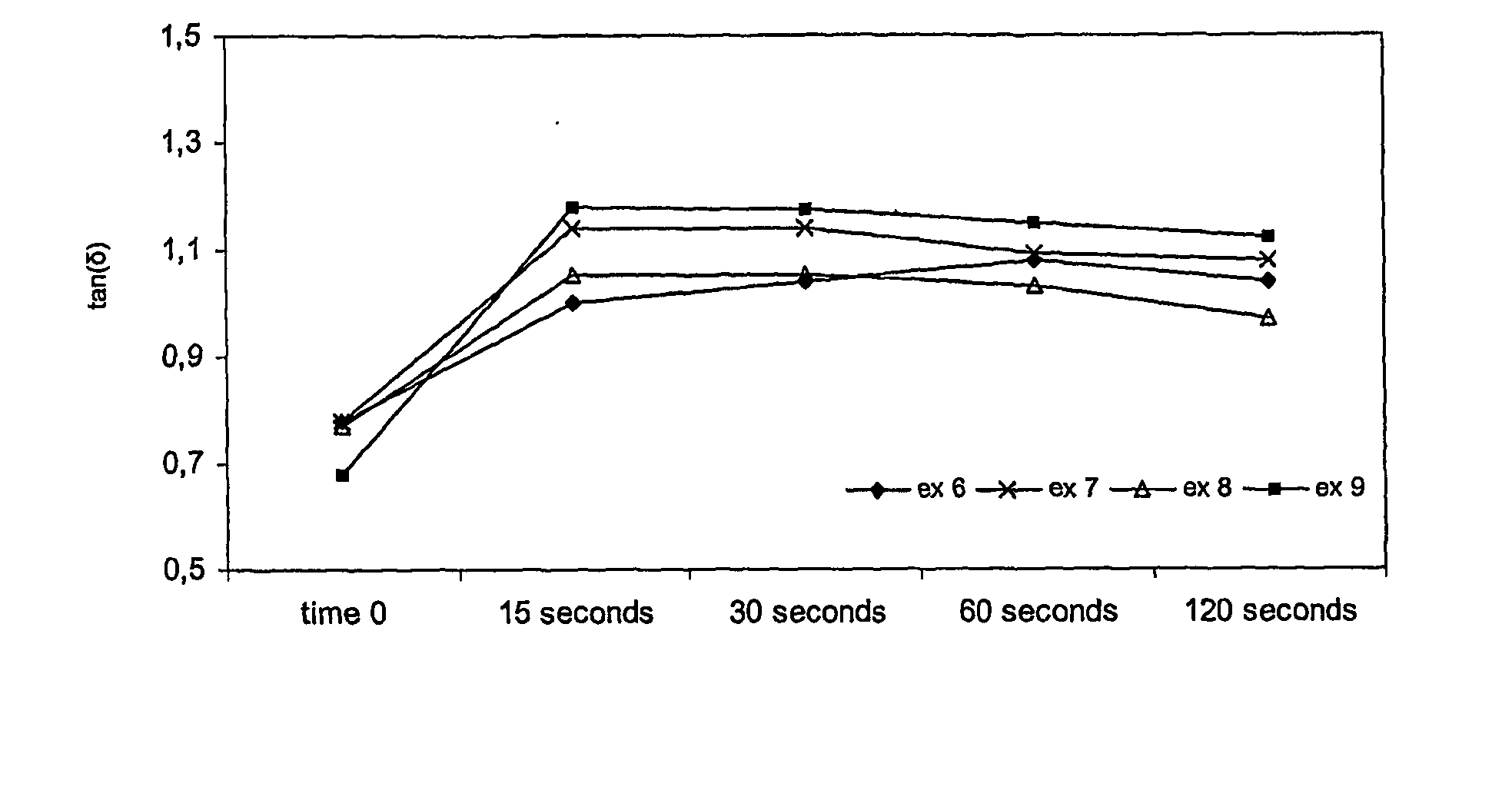Gum base
- Summary
- Abstract
- Description
- Claims
- Application Information
AI Technical Summary
Benefits of technology
Problems solved by technology
Method used
Image
Examples
example 1
Preparation of Resin
[0091] A resin sample was produced using a cylindrical glass, jacketed 10 L pilot reactor equipped with glass stir shaft and Teflon stir blades and bottom outlet. Heating of the reactor contents was accomplished by circulation of silicone oil, thermostated to 130° C., through the outer jacket. D,L-lactide (4.877 kg, 33.84 mol) was charged to the reactor and melted by heating to 140° C. for 6 h. After the D,L-lactide was completely molten, the temperature was reduced to 130° C., and stannous octoate (1.79 g, 4.42×10−3 mol), 1,2-propylene glycol (79.87 g, 1.050 mol), and ε-caprolactone (290.76 g, 2.547 mol) were charged to the reactor. After the mixture became homogeneous, stirring was continued for 24 h at 130° C. At the end of this time, the bottom outlet was opened, and molten polymer was allowed to drain into a Teflon-lined paint can.
[0092] Characterization of the product indicated Mn=5,700 g / mol and Mw=7,100 g / mol (gel permeation chromatography with online M...
example 2
Preparation of LMWE Elastomer
[0093] A LMWE sample was synthesized within a dry N2 glove box, as follows. Into a 500 mL resin kettle equipped with overhead mechanical stirrer, 0.40 g 1,2-propane diol (1.82 mL of a 22.0% (w / v) solution in MeCl2), and 0.094 g Sn(Oct)2 (2.2 mL of a 4.27% (w / v) solution of in MeCl2) were charged under dry N2 gas purge. The MeCl2 was allowed to evaporate under the N2 purge for 15 min. Then ε-caprolactone (170 g, 1.49 mol), TMC (76 g, 0.74 mol), and δ-valerolactone (74 g, 0.74 mol) were added. The resin kettle was submerged in a 130° C. constant-temperature oil bath and stirred for 14 h. Subsequently the kettle was removed from the oil bath and allowed to cool to room temperature.
[0094] Characterization of the product indicated Mn=57,960 g / mol and Mw=85,910 g / mol (gel permeation chromatography with online MALLS detector) and Tg=−59.8° C. (DSC, heating rate 10° C. / min).
example 3
Preparation of HMWE
[0095] A HMWE sample was synthesized in a dry N2 glove box, as follows. Into a 500 mL resin kettle equipped with overhead mechanical stirrer was charged 0.037 g Sn(Oct)2 (2.4 ml of a 1.54% (w / v) solution in methylene chloride) under dry N2 gas purge. The methylene chloride was allowed to evaporate under the N2 purge for 15 min. Then, pentaerythritol (0.068 g, 4.99×10−4 mol), ε-caprolactone (68.0 g, 0.596 mol), TMC (7.0 g, 0.069 mol), and δ-valerolactone (33.0 g, 0.33 mol) were added. The resin kettle was then submerged in a 130° C. constant-temperature oil bath and stirred for about 2-2.5 h, at which time the mass solidified and could no longer be stirred. The reacting mass was then maintained at 130° C. for an additional 11.5-12 h for a total reaction time of 14 h. Subsequently the kettle was removed from the oil bath and allowed to cool to room temperature.
[0096] Characterization of the product indicated Mn=113,900 g / mol and Mw=369,950 g / mol (gel permeation ch...
PUM
 Login to View More
Login to View More Abstract
Description
Claims
Application Information
 Login to View More
Login to View More - R&D
- Intellectual Property
- Life Sciences
- Materials
- Tech Scout
- Unparalleled Data Quality
- Higher Quality Content
- 60% Fewer Hallucinations
Browse by: Latest US Patents, China's latest patents, Technical Efficacy Thesaurus, Application Domain, Technology Topic, Popular Technical Reports.
© 2025 PatSnap. All rights reserved.Legal|Privacy policy|Modern Slavery Act Transparency Statement|Sitemap|About US| Contact US: help@patsnap.com


